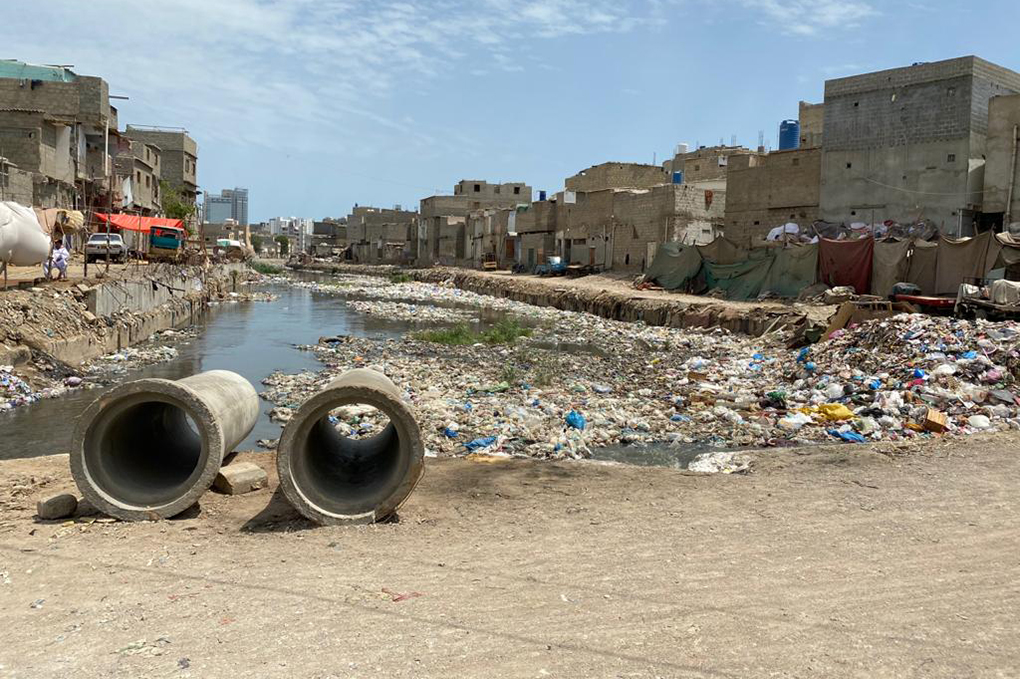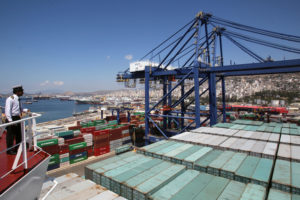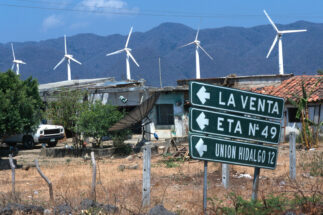It does not always rain in Karachi during the monsoon. When it does, it floods. It was worse this year, with three days of heavy rainfall in late August leading to least 47 deaths due to drowning, electrocution, as well as house and wall collapses. Twenty districts of Pakistan’s Sindh province – of which Karachi is the capital – have been declared “calamity affected”. Personnel from the armed forces have been called out to rescue stranded people, distribute food and medical aid.
Many parts of Karachi went without electricity for 50 hours, prompting Sindh’s Chief Minister Murad Ali Shah to ask, “What kind of service is this?” Internet and mobile phone networks were disrupted all over Pakistan’s largest city.
Women, children and the elderly waded through waist-deep sewage to reach rescue boats as rain continued to pelt down; the boats had to navigate around floating furniture, submerged cars, motorcycles and even shipping crates pushed around by the force of the floodwater.
The meteorological department totalled August rainfall in Karachi at 484 millimetres (19 inches), with the highest daily rainfall of 130 mm at PAF Faisal Base on August 28.
“Last year, through the three monsoon months, the PAF Faisal Base recorded a total of 345 mm of rains; this year in just two months, over 600 mm rain has been recorded there,” Sardar Sarfaraz, the Pakistan Meteorological Department’s Karachi head told The Third Pole.
“The rains are unprecedented; and in all likelihood, this seems like an erratic event, with the last such intense rain recorded in 1931,” said Sarfaraz. “I cannot say with finality that this rainfall can definitively be attributed to climate change.”
“Due to the effect of global warming on the hydrological cycle, we will see a continued intensification of monsoons in the coming years,” predicted climate expert Imran Khalid, who heads the Environment and Climate Change section of the Islamabad-based Sustainable Development Policy Institute.
Where will the water go?
Khalid wondered, though, if Karachi would have been any better off without climate change. According to him, the city’s woes are rooted in poor governance and planning.
“By encroaching and blocking the streams that form the natural watershed, over many decades, the authorities have set us up to fail,” he pointed out, terming the flood footage on television a manifestation of “decades of apathy and ignorance about the laws of nature”.
“If you block the flow of water, it will go around you; if it can’t go around you, it will continue to rise until it envelopes you.” The crises were “of our own making”, Khalid added, emphasising the need to incorporate the laws of nature into urban planning.
Karachi has over 550 big and small storm water drains. “But over the years, some as wide as 200 feet have narrowed to just 30 feet today, due to unauthorised construction,” admitted Karachi’s outgoing mayor Waseem Akhtar, head of the Karachi Metropolitan Corporation (KMC). As he left office on August 30, he said, “Karachi is for everyone but nobody is for Karachi.”
Going about town to inspect the damage, Chief Minister Shah chided people for “building houses in the belly of the Malir river”, according to media reports. “The entire city is sinking because of your encroachments,” he reportedly said.
See: Early downpour exposes Karachi’s drainage flaws
Noman Ahmed, dean of the Architecture and Management Sciences department at Karachi’s NED University, said some encroachments happened in connivance with different government agencies, while some were “organic”.
“For example, the encroachments on Gujjar Nala were facilitated by the KMC functionaries by providing inappropriate leases [on its edges – in areas that were not supposed to be inhabited in the first place],” Ahmed said.
“The alignment of the nalas [drains] have clearly been demarcated in all land-use plans available with the different civic agencies,” said Ahmed, and therefore selling plots of land was nothing less than a “criminal act”.
He did not blame those who had bought the plots. Ahmed said people had started building on the dry bed of Gujjar Nala because for decades there was nothing more than a thin stream. “They occupied the land without knowing how vulnerable they were to sudden inundation, and this is what happened in recent rains.”
Architect and heritage consultant Marvi Mazhar also attributed “unplanned and unregulated growth, lack of monitoring and corruption” as major reasons for the havoc the rains wrought on the city of 16 million, which has been heavily “concretised, with not enough soft ground left for water to be absorbed”.
The problem has persisted despite court judgements, including an order from the country’s chief justice that all illegal construction be removed from Karachi – whether on or off the drains.
Describing the removal of encroachments as “a very tricky affair”, Ahmed said that very often debris left behind by a demolition crew causes more obstruction to water flow than the original buildings.

“These drains can actually be added into beautification plans with plantations on either side, and run across the city like in Amsterdam,” said Mazhar. Instead, she said, they are seen and treated as an eyesore with garbage thrown alongside them, which invariably slips into the drain thereby choking it. She held both residents and the government responsible for the indifference shown towards Karachi’s garbage.
Now Prime Minister Imran Khan has said he wants a “permanent solution” to problems associated with drains, the sewage system and water supply.
Ahmed said the government should come up with a “comprehensive policy for not just all the drains but other waterways and spaces where water accumulates. Just working on a piecemeal basis will not get the desired results.”
He also pointed out that those evicted in this process must be rehabilitated. “The Sindh government has ample land in Karachi’s suburbs. If done in a step-by-step manner, not everyone will need to be evicted in one go, or at least till the re-demarcation of the nalas takes place.”
Many residents feel the collapse of municipal services and consequent problems such as the recent flooding is because Karachi has become too unwieldy to be governed. With 19 different land-owning agencies under the three tiers of government – the city government in the hands of the Muttahida Qaumi Movement, the provincial government of the Pakistan People’s Party that holds the purse strings and the Pakistan Tehreek-e-Insaf at the centre – the city’s problems only get bounced around and the blame game continues.
Same situation all over South Asia
Substitute the names of the rivers, drains and political parties, and the same story is repeated in varying degrees across all the cities of South Asia – Rawalpindi, Mumbai, Delhi, Patna, Kolkata, Dhaka and on and on. For years, residents have been resigned to the mess and vented on social media. Now they have started coming out on the streets – it happened in Kolkata in May after week-long power failures in some suburbs following Cyclone Amphan and it is happening in Karachi now. Perhaps the fact that the hardships have now spread from slums to tony neighbourhoods has something to do with it. The internet is back now, and the phones are working, but the protests continue. Their effect remains to be seen.
![<p>A flooded Karachi neighbourhood on August 27, 2020 [Image by: Alamy]</p>](https://dialogue.earth/content/uploads/2020/08/Karachi-flooding-27-August-2020-Alamy.jpg)








